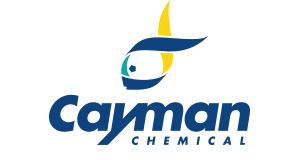Thapsigargin, CAS 67526-95-8
Thapsigargin, CAS 67526-95-8
SKU
CAY10522-10
Packaging Unit
10 mg
Manufacturer
Cayman Chemical
Availability:
loading...
Price is loading...
Shelf life (days): 1460.0
Formulation: A crystalline solid
Formal Name: (3S,3aS,4R,6R,7S,8R)-6-acetoxy-4-(butyryloxy)-3,3a-dihydroxy-3,6,9-trimethyl-8-(((Z)-2-methylbut-2-enoyl)oxy)-2-oxo-2,3,3a,4,5,6,6a,7,8,9b-decahydro-1H-cyclopenta[e]azulen-7-yl octanoate
Purity: ≥97%
Formula Markup: C34H50O12
Formula Weight: 650.8
CAS Number: 67526-95-8
Notes: Thapsigargin is an inhibitor of sarcoplasmic/endoplasmic reticulum Ca2+-ATPase (SERCA; IC50 = ~30 nM for the rat liver microsomal enzyme), an ER stress inducer, and a sesquiterpene lactone that has been found in Thapsia.{66305,16254,66306} It increases intracellular calcium levels in isolated rat hepatocytes (EC50 = ~80 nM) and protein levels of the ER stress markers DNA damage-inducible transcript 3 (DDIT3), also known as CHOP, and glucose-regulated protein 78 kDa (GRP78), as well as phosphorylation of protein kinase R-like ER kinase (PERK) and eukaryotic translation initiation factor 2α subunit (eIF2α) in SH-SY5Y cells when used at a concentration of 1 µM. Acute exposure of thapsigargin (2 µg/ml for 1 h) to primary mouse bone marrow-derived macrophages (BMDMs) protects against TNF- and zVAD-induced necroptosis and prolonged exposure of thapsigargin (2-16 µM for 48 h) induces apoptosis in SW-13 adrenocortical carcinoma cells.{64844,66306} Thapsigargin (3 µM) induces autophagosome accumulation in mouse embryonic fibroblasts (MEFs).{66307} It reduces viral titers in Vero E6 cells co-infected with severe acute respiratory syndrome coronavirus 2 (SARS-CoV-2) and influenza A strain H1N1 when used at a concentration of 0.5 µM.{66308} Thapsigargin (1 mg/kg) reduces tumor volume in an SW-13 mouse xenograft model.{66306}
Formulation: A crystalline solid
Formal Name: (3S,3aS,4R,6R,7S,8R)-6-acetoxy-4-(butyryloxy)-3,3a-dihydroxy-3,6,9-trimethyl-8-(((Z)-2-methylbut-2-enoyl)oxy)-2-oxo-2,3,3a,4,5,6,6a,7,8,9b-decahydro-1H-cyclopenta[e]azulen-7-yl octanoate
Purity: ≥97%
Formula Markup: C34H50O12
Formula Weight: 650.8
CAS Number: 67526-95-8
Notes: Thapsigargin is an inhibitor of sarcoplasmic/endoplasmic reticulum Ca2+-ATPase (SERCA; IC50 = ~30 nM for the rat liver microsomal enzyme), an ER stress inducer, and a sesquiterpene lactone that has been found in Thapsia.{66305,16254,66306} It increases intracellular calcium levels in isolated rat hepatocytes (EC50 = ~80 nM) and protein levels of the ER stress markers DNA damage-inducible transcript 3 (DDIT3), also known as CHOP, and glucose-regulated protein 78 kDa (GRP78), as well as phosphorylation of protein kinase R-like ER kinase (PERK) and eukaryotic translation initiation factor 2α subunit (eIF2α) in SH-SY5Y cells when used at a concentration of 1 µM. Acute exposure of thapsigargin (2 µg/ml for 1 h) to primary mouse bone marrow-derived macrophages (BMDMs) protects against TNF- and zVAD-induced necroptosis and prolonged exposure of thapsigargin (2-16 µM for 48 h) induces apoptosis in SW-13 adrenocortical carcinoma cells.{64844,66306} Thapsigargin (3 µM) induces autophagosome accumulation in mouse embryonic fibroblasts (MEFs).{66307} It reduces viral titers in Vero E6 cells co-infected with severe acute respiratory syndrome coronavirus 2 (SARS-CoV-2) and influenza A strain H1N1 when used at a concentration of 0.5 µM.{66308} Thapsigargin (1 mg/kg) reduces tumor volume in an SW-13 mouse xenograft model.{66306}

 Deutsch
Deutsch










